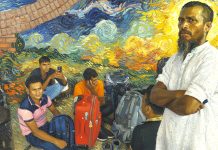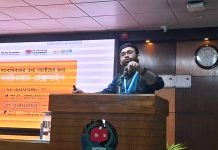The use of renewable has been seen as viable alternatives to meet the existing demand for power supply for both Nepal and Bangladesh. Despite huge potentials, both countries have yet to exploit solar energy to meet the energy needs.
This article is a joint publication by Sudeep Ghimire and Zulker Naeen
Date of Publish: Oct 06, 2017
In 2015, Nepal and the World Bank signed an agreement to invest USD 130 million to develop a 25 MW solar project that is likely to be connected to the national grid.
It is one of the largest renewable energy plant planned in Nepal, is one of the least developed countries, with more than 80% of its population residing in rural areas.
It has no oil, gas, or coal reserves, and its energy sector depends on traditional energy sources like firewood, crop residues, and animal dung for domestic use.
The majority of rural populations meet their energy needs by burning biomass in traditional stoves, and mostly fossil-derived fuels are imported. Also, the continuous increase of petroleum imports harms its fragile economy.
The sources of renewable energy are mini and micro hydropower, solar energy, various forms of biomass energy, biogas and wind energy etc. But still, around 85% of the total final energy consumption in Nepal is met by traditional biomass energy. 28% of households in Nepal do not have access to electricity.
Nepal aims to achieve universal access to clean, reliable and affordable renewable energy solutions by 2030. It is expected to reduce dependence on traditional and imported energy by increasing access to renewable energy.
The use of solar energy is more reliable than traditional electricity in Nepal. Private installations of solar panels are more frequent in urban areas used as a backup during power outages.
On average, Nepal has 6.8 sunshine hours per day with the intensity of solar radiation ranging from 3.9 to 5.1 kWh per meter square, with a commercial potential of solar power for grid connection estimated to be 2,100 MW.
In 2015, Nepal and the World Bank signed an agreement to invest USD 130 million to develop a 25 MW solar project, will eventually be connected to the national grid. It is the largest renewable energy plant planned in the country. The wind potential is available in the mountainous region.
Solar and Wind Energy Resource Assessment project has attempted to map the wind resource potential in Nepal, shown a prospect of wind energy with the prediction of about 3,000 MW of wind energy.
Despite its hydro-dominant policies, Nepal has established a semi-autonomous agency called the Alternative Energy Promotion Centre in 1996. It claims that more than 1.5 million families got access to electricity using renewable energy sources, especially in off-grid areas.
Meanwhile, rapid urbanization fueled by stable economic growth has already created a huge energy demand in Bangladesh, where electricity is the widely used form of energy.
At present, about 72% of the total population have access to electricity. Bangladesh is starving for energy for the last few decades since its power generation mostly depends on imported fossil fuel and natural gas. The present government has increased electricity generation, yet the grid electricity to the remote areas is difficult because of the lack of longstanding distribution facilities.
Bangladesh is hosting the fastest growing Solar Home System program in the world. Over 50,000 Solar Home System unit installed per month in the recent past. As of 2017, Bangladesh has the world’s biggest Solar Home System programme with about 5 million.
Over 30 million people are dependent on solar energy creating employment for over 100,000 people. It’s an off-grid success and over 12 per cent of the population outside the grid network is getting access to electricity through the installation of more than 4.5 million solar-home systems.
Bangladesh enjoys average solar radiation between 4 and 6.5 kilowatt-hours (kWh) per square meter per day and blessed with year-round sunshine. In terms of rural renewable energy development, the country has made significant progress by installing Solar Home Systems in off-grid areas.
Back in 1996, it became popular among the rural people for its affordable monthly instalment facility at the price of kerosene. It became a successful financial model for rural development.
A strong network of supply chain and branches also help Solar Home System become popular and acceptable.
A community-based solar approach such as solar irrigation pumps, solar mini-grid, arsenic water treatment plants, and solar street lights have the potential of solar energy. These are engaging the community people by ensuring food security, arsenic-free pure water, and improved socio-economic conditions in off-grid areas of Bangladesh.
However, Bangladesh solar mission is designed to achieve SDGs by 2030.
To facilitate thousands of rural villages through the next decade, moving towards renewable energy can bring a smile to the rural population by developing agricultural output, offering food security, providing modern facilities, creating new businesses and jobs for both men and women.
Bangladesh’s solar mission may gradually guide the nation towards renewable energy and become the first solar nation by 2041.
The go-for renewables for both countries depend on continuous government and donor support and public-private partnerships. The extension of natural resources based on electricity is always perilous for the environment than renewable energy.
The use of renewables has been seen as viable alternatives to meet the existing demand for power supply for both countries. Despite huge potentials, both countries have yet to exploit solar energy to meet the energy needs.









